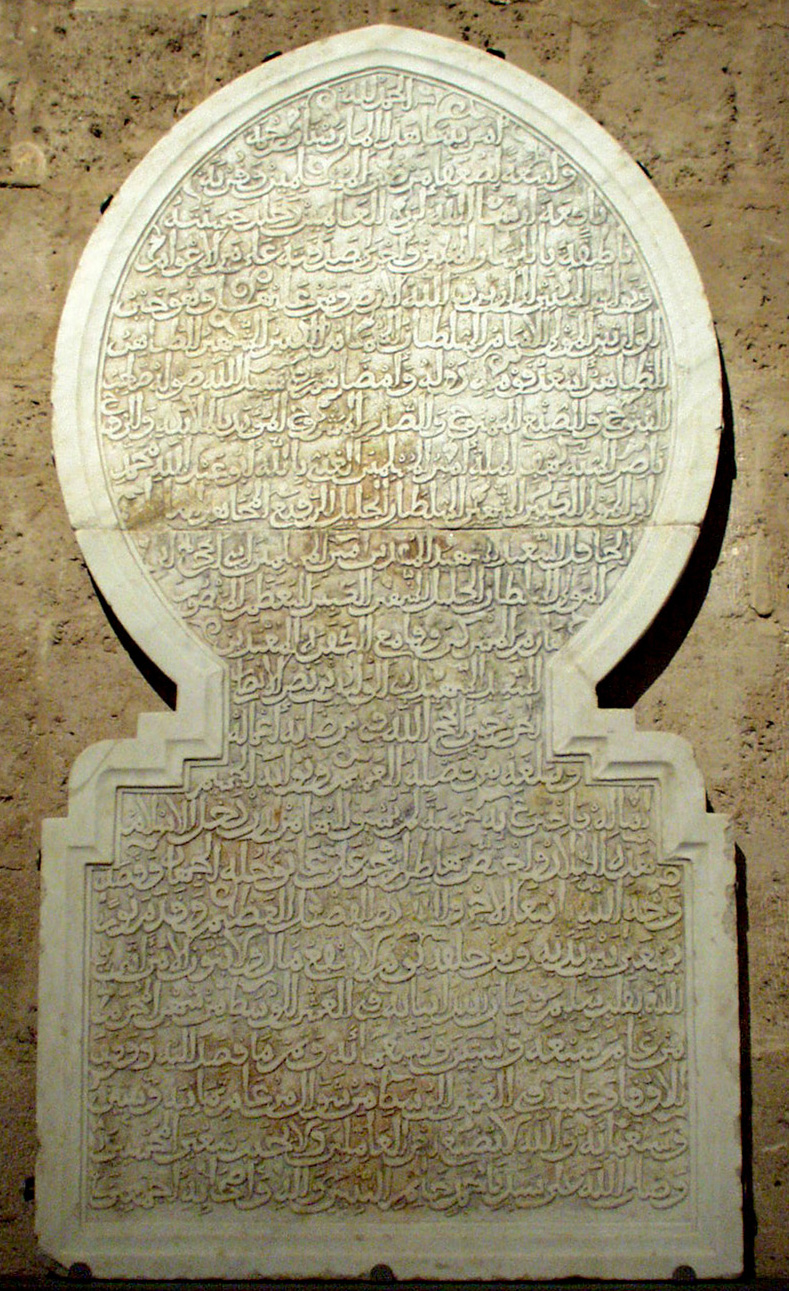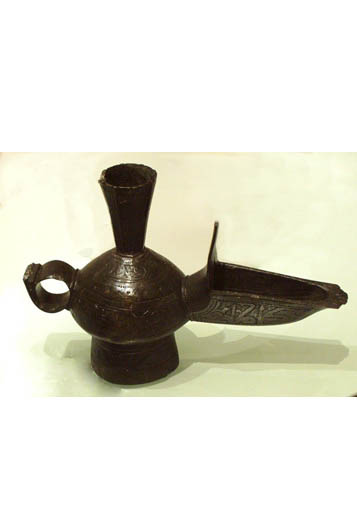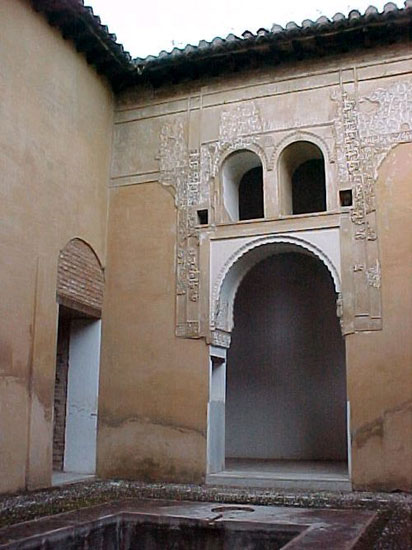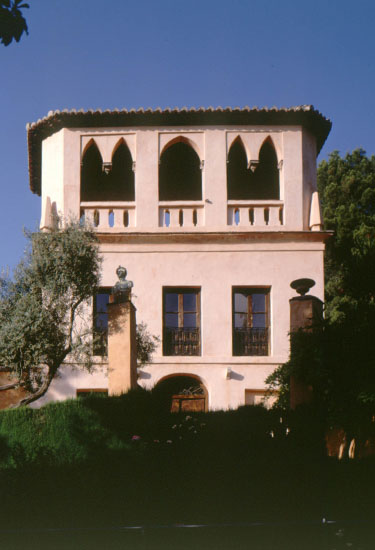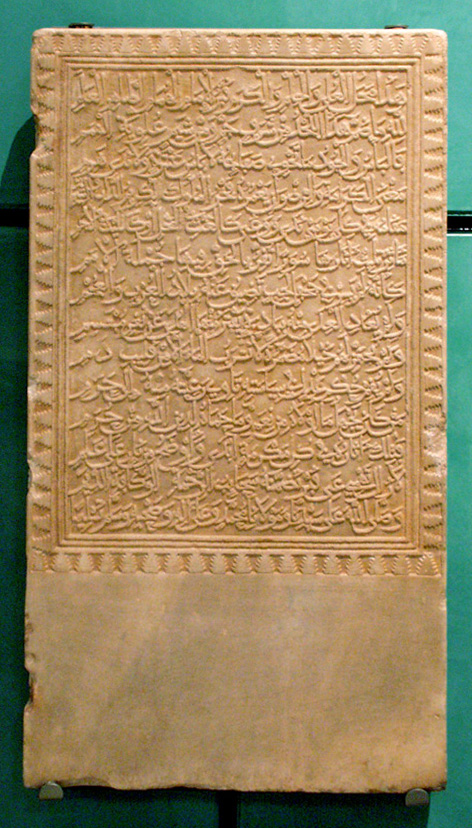The basin from almanzor’s palace
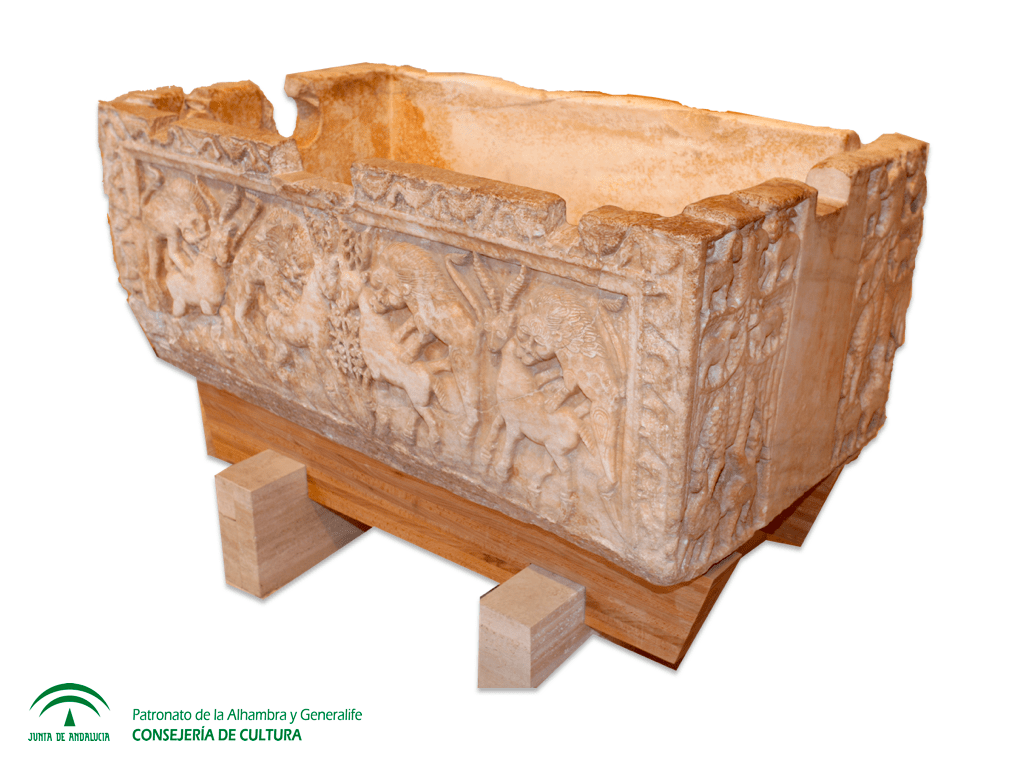
Ms Montserrat Morillas
Carved in the Cordoba of the Caliphs, this piece was brought to Granada by King Badis and later reused as a basin or drinking trough in the moat around the Torre de la Vela in the Alhambra, during which time it was damaged and some parts were lost.
In chronological terms, it seems likely that after being carved it was placed in the centre of a courtyard in one of Almanzor’s palaces in Cordoba in the tenth century during the Caliphate period.
Carved out of a single block of marble, a different decorative technique was used for each side of the piece. The main designs were carved with a medium-high relief with a drill-bit technique, while a more superficial sculpting technique was used for the epigraphic motifs.
The iconographic figures used to decorate the piece confirm once again that both people and animals can be represented in all kinds of Islamic art forms, so contradicting the prohibitions of such displays said to have been attributed to the Koran over the centuries, according to the different interpretations of this Holy Book.
The decoration is totally symbolic and includes topics such as the tree of life, lions attacking deer and goats, waterfowl, a hunting eagle, hares, friezes with italic script and plant motifs.
In conclusion this piece is full of interesting information and displays different decorative and symbolic motifs and a variety of techniques for working marble. We will also be exploring key aspects of its history, from its first location in Córdoba to its subsequent move to Granada and the Alhambra.
Time: Saturdays at 12.00 h
Place: Room III, Museum of the Alhambra, Palace of Charles V





 Contact
Contact






